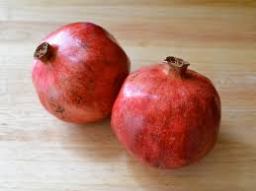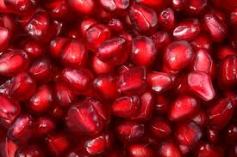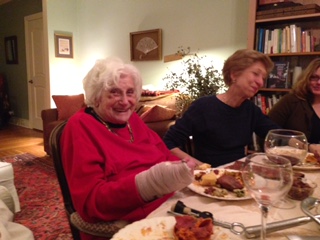 When I was growing up in the 1950s in my Egyptian Jewish immigrant home, each of the High Holidays was imbued with sacredness, thanks largely to my mother’s commitment to a creating a harmonious and memorable gathering of family and friends. Around a long table, covered with an embroidered white cloth and set with sparkling silver and delicately fluted china, she served at each season the festive meal that made manifest for us the presence of the Divine.
When I was growing up in the 1950s in my Egyptian Jewish immigrant home, each of the High Holidays was imbued with sacredness, thanks largely to my mother’s commitment to a creating a harmonious and memorable gathering of family and friends. Around a long table, covered with an embroidered white cloth and set with sparkling silver and delicately fluted china, she served at each season the festive meal that made manifest for us the presence of the Divine.
My father, an Orthodox man who prayed each morning and went regularly to the local Sephardic synagogue in Brooklyn, privately followed the tenets of his faith. But it was my mother, unconsciously devout, who brought the public rituals of our religion to life. As a child, I longed to be at prayer with my father and was envious of the men and boys who studied and recited the sonorous ancient Hebrew; I did not want to be confined to polishing the silver and setting the table. But today, as an adult, I am grateful for the silent teachings bequeathed to me by my mother.
Passover had s pecial meaning for us because our family’s departure from Egypt in 1951 seemed a reenactment of the exodus of the ancient Hebrews; but Rosh Hashanah—that holy day without explanatory narrative—was even purer in its celebration of abundance and blessing, renewal and return. Each year, I looked forward to the new moon in Tishrei that coincided with the arrival of autumn in New York and the beginning of the school year. It seemed especially fitting to mark this time of bright blue skies and fresh clean air as the start of our New Year.
pecial meaning for us because our family’s departure from Egypt in 1951 seemed a reenactment of the exodus of the ancient Hebrews; but Rosh Hashanah—that holy day without explanatory narrative—was even purer in its celebration of abundance and blessing, renewal and return. Each year, I looked forward to the new moon in Tishrei that coincided with the arrival of autumn in New York and the beginning of the school year. It seemed especially fitting to mark this time of bright blue skies and fresh clean air as the start of our New Year.
 While our Ashkenazi neighbors discreetly celebrated Rosh Hashanah with sweet round challah and apples dipped in honey to symbolize their wishes for a sweet year, we enacted the elaborate, extravagant Sephardic seder.
While our Ashkenazi neighbors discreetly celebrated Rosh Hashanah with sweet round challah and apples dipped in honey to symbolize their wishes for a sweet year, we enacted the elaborate, extravagant Sephardic seder.
On our table, the crimson pomegranate seeds my mother had carefully separated from the skin glistened like jewels illumined from within; a pale green jam made from the grated flesh of a gourd, scented with rosewater and studded with thin slivers of blanched almonds, shone similarly with a numinous, interior light. Bowls of black-eyed peas simmered with cinnamon and tomatoes were arrayed beside a delicately-flavored leek omelet, breaded and fried brains, roasted beets, fresh dates, apples, and—best of all—a previously untasted new fruit of the season: usually fresh fig or persimmon or prickly pear.
These were the ritual foods, painstakingly prepared and then consumed with deliberation and delight after the recitation of a specific prayer: “May our mitzvoth (good deeds) be as numerous as the pomegranate seeds”; “May we be as a head and not a tail”; “May the evil of our verdicts be ripped”; “May our enemies depart.” The specific prayers often involved puns, as my father explained: the Hebrew for “gourd” is close to the words for “ripped apart”; “beet” is a homonym for “depart.” To me as a child, this association of the sounds of words with the performance of actions seemed especially charged and magical, as indeed it was: The Word made Flesh. Unconsciously, I knew that around that shining table, I was experiencing the Divine.
Had I been born just a few years later, or had our immigrant Jewish community been a little more liberal, I might have found my way to Hebrew school, and perhaps even gone on to become a rabbi, for I always longed to be in closer communion with Divinity. As it was—alienated by what I experienced as the patriarchal focus of Judaism, I turned away from my family’s faith, while still seeking a form for my devotion. I embraced yoga, Native American rituals and the Goddess, eventually becoming initiated as a Wiccan Priestess—only to find that I had been led back to my mother’s practices.

For what was the Rosh Hashanah seder other than a new moon ritual, a circle cast with love and clear intention, a sharing of cakes and ale, communion? What were we doing other than celebrating the presence of the Divine among us, the embodied Goddess in our lives, what Carol Christ has called “the intelligent embodied love that is the ground of all being” (Rebirth of the Goddess, 107)?
Over time, I gained the courage to create Rosh Hashanah gatherings of my own. Like my mother, I cleaned and shopped and cooked and prepared, taking time away from my ordinary routines of teaching and writing. To chop vegetables, to prepare the pomegranates, to simmer the beans and cook the leeks—each action became a prayer, each gesture a link that bound me to my mother and all the generations of women before her.
Following the custom I inherited from my family, for many years I tried letting my brother, a cousin, or another male lead the prayer as my father did. After all, I do not read Hebrew, and the habit of deferral to male authority is still deep within me. But the men I know do not approach their assignment with the same seriousness with which I intend it. And so, having cleared the space, I now allow myself to fill it: in all sincerity and humility, I lead the ritual, using what I have learned from my Wiccan rituals, as well as all the years of watching my father. As I do so, my heart opens and the words take form. I have come full circle.
I write this during the month of Elul, as the moon waxes in preparation for its return to darkness, and the shofar is sounded daily to awaken us from our slumbers. I await the coming of the next new moon, as I cleanse my inner and outer being, and begin to envision the Rosh Hashanah Seder that will bring my family and friends together in this ancient ritual of renewal and return.
Blessed be!
Joyce Zonana is the author of Dream Homes: From Cairo to Katrina, An Exile’s Journey, a memoir about her life growing up in the U.S. as an Egyptian Jewish woman. After participating in Carol Christ’s Goddess Pilgrimage to Crete in 1997, she served for a time as Co-Director of the Ariadne Institute for the Study of Myth and Ritual. She is currently a Professor of English at Borough of Manhattan Community College and a regular contributor to Lilith Magazine and Nola Diaspora.


Thanks Joyce for introducing us to the rituals of Sephardic Judaism, which your family brought to America from Egypt. All Jews do not hail from Eastern Europe, though their rituals and practices are better known in America.
And thanks also for explaining how you interweave your understanding of the Goddess and feminist rituals into your understanding of and leadership in Jewish rituals. Theodor Gaster’s Festivals of the Jewish Year was one of my favorite books for many years, because it showed that though Jewish rituals are situated in history they have even older roots in the seasons and cycles of nature.
By the way, Gaster was Sephardic.
LikeLike
Thank you Carol. I look forward to reading Gaster’s book. I’ve always “known” how closely our holidays are linked to the cycles of the earth and the moon.
LikeLike
Carol, Arthur Waskow (of Ashkenazi background I would assume although I’m not certain) also wrote a similar book called Seasons of Our Joy that roots the traditions and holidays into the seasonal changes and older rites of the land. That sounds just like what Gaster does. It’s a great book as well. Have you read that one? I’ll have to read Gaster’s because I am unfamiliar with that one.
LikeLike
I so enjoyed this piece. Although not Jewish myself, I taught in a Jewish school for 11 years and had to become familiar with mitzvoth, brachot, seders and all the other parts of Yiddishkeit. We had only one Sephardi teacher in the school and she and I got on very well. Rosh Hashanah is always associated for me with the same fresh air and new term at school and this piece took me back to what I have always loved about Judaism – its warmth, and I love how the author has melded it together with the goddess, and even more ancient tradition. Reading this made my day.
LikeLike
Thanks so much. Happy New Year!
LikeLike
Lovely post- I learned so much and your descriptions of your mother’s table, your family, your religions- just great. Only now I’m hungry…
LikeLike
Thanks so much! Pomegranates are in all the markets these days . . . . :-)
LikeLike
I love the phrase “the crimson pomegranate seeds my mother had carefully separated from the skin glistened like jewels illumined from within” (and the illustration). I remember years ago scouring the city for a pomegranate for Rosh Hashana (which was very late that year) and various rituals I have performed with pomegranates over the years since. I am really inspired to separate the seeds like this.
LikeLike
The pomegranate is such a powerful, beautiful fruit. It’s easy to understand why it has been significant in so many ritual traditions. It might be fun one day to do a history of the pomegranate!
LikeLike
I loved the image of your mother preparing the feast, and the holiness of that love. Thank you for this post. I presume that is your mother smiling up from the photo. And now I’m also hungry!
LikeLike
Yes, that is my mother, with a broken wrist that year. She’s now 94, and will be with us at the feast again this year. Eat up!
LikeLike
So beautiful! L’Shana Tova!
LikeLike
Thanks so much Elizabeth! I have so enjoyed reading your writing.
LikeLike
exquisite, sweet, powerful. Makes me want to hug my grandmothers and look up at the sky.
LikeLike
Thanks so much Rebecca! What a lovely comment.
LikeLike
Blessed be to you! What a wonderful story. I love it that you’re leading your rituals and festivals. Blessings likewise to your mother and to all our mothers. And to Our Mother.
LikeLike
Thank you Barbara! Blessings to all.
LikeLike
Although I don’t have a rich family heritage like you do, I have made Sukkoth my goddess-infused Jewish fall holiday. We put up the bright yellow handmade sukkah “tent” that I made years ago, cover it with palm leaves, hang the fruits of our harvest, and make great food for friends. Candles glow and conversation goes on into the night. And I always include a small table for Asherah, the mother of all this bounty.
This is a wonderfully written article full of vivid, sensual details about your family’s celebrations. You’ve inspired me. It is good to have more Jewish content on this site.
LikeLike
How beautiful your Sukkoth sounds! Another inspiration.
Perhaps you will write about it in more detail too. Blessed be.
LikeLike
So evocative. So beautiful. Your words shine like the numinous pomegranate seeds in a bowl. Thank you, my dear. So much love and so many blessings to you.
LikeLike
Thank YOU Darlene!
LikeLike
Joyce, It’s wonderful to read your sensual, spiritual feast of a blog entry! I love the imagery and that you’ve invited us to observe at your table this “holy day without explanatory narrative.” You write with such care to detail and so thoughtfully. I loved reading this this morning, thought I’d sent my comment, see I had not, so am sending a second time. I loved reading it again this afternoon, blessed by your blessings for the season.
Happy to see your mother — it’s been years since we met briefly in New Orleans.
LikeLike
So nice to hear from you Susan, and so glad the piece touched you. Blessed be!
LikeLike
This was a joy to read! Thank you for sharing your heritage with us and the ways in which a tradition has come “full circle.” I would love to know what kinds of readings or texts you use in the ritual. I’m assuming it is not the “traditional” ones. Thanks again and shanah tova!
LikeLike
So glad you enjoyed the piece Ivy! I have very much enjoyed reading your posts as well. L’shanah tova!
LikeLike
What a charming testimonial to Nellie! In my Italian/Irish upbringing the holidays & food were outstanding to me as a child. I remember the seder that Medicine Hawk & I attended at your home in New Orleans. It is also reminiscent of the Native American “feasts” that took place (& still do) in Thanksgiving to the Earth for
Her abundance. So much to be thankful for.
LikeLike
Thank you Mary Ann. Yes, so many traditions unite in honoring Earth. Something we should always remember. All our Relations!
LikeLike
It sounds like a wonderful celebration! I wish Christianity would help bring more awareness to these traditions of Judaism, the religion of their messiah.
LikeLike
We can all work on this together, Kris. Thanks.
LikeLike
Just thank you for this piece.
LikeLike
Thank you Iris. So glad it meant something to you!
LikeLike
I loved this piece. Although I am not Jewish, I have always thought the Jewish rituals celebrating holidays were rich–in food, in symbolism, in prayer. Your telling of the Rosh Hashanna Seder was so delicately vivid that I greatly desired to be at that table. I also liked that you now have created your own ritual incorporating your devotion to the Goddess and Native American ritual. And warm wishes to your mother who was, and I am sure, continues to be an inspiration.
LikeLike